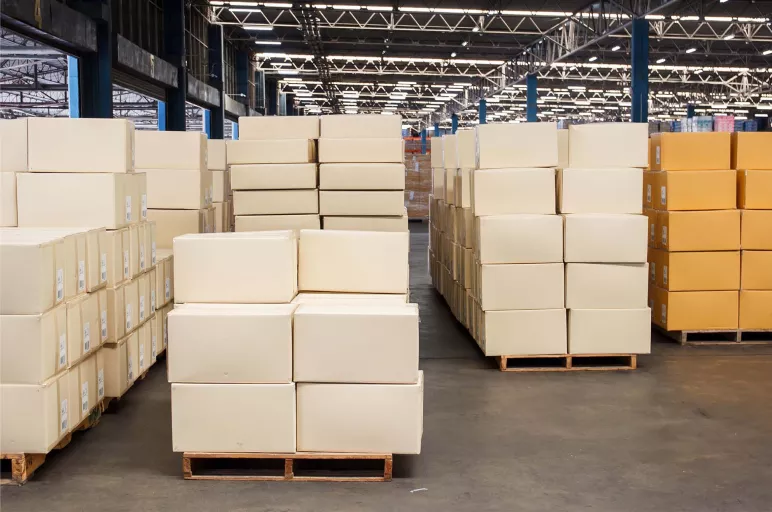
How Middle Mile Delivery Can Benefit Businesses
- Middle mile delivery involves transporting goods from factory to warehouse or fulfillment centers for distribution.
- Among various industries, consumer products and retail benefit the most from middle mile delivery.
- An effective middle mile delivery mechanism helps in saving costs and ensures timely delivery of goods and products.
December 06, 2022 | Supply Chain Strategy
Middle mile logistics is a part of the supply chain mechanism that is often overlooked as it is a challenging task optimizing it, similar to first mile and last mile logistics.
However, the global pandemic has changed how middle mile logistics and middle mile delivery are viewed. Companies are now focusing on this key link in the supply chain and are looking to develop more robust logistics mechanisms.
A ready consignment at the port but no supply chain to move it from the port to the warehouse facility is a critical situation. Transporting such a consignment between two facilities or temporary stores is called middle mile logistics. It is a critical part of the supply chain and requires a focused approach.
What is Middle Mile Delivery?
Middle mile delivery includes transporting goods from a factory to a warehouse or fulfillment center for distribution. It is a cost-effective and operationally efficient logistics distribution system.
Among various industries, consumer products and retail benefit the most from the middle mile delivery mechanism. As there is no shortage of inventory, it reduces instances of empty shelves. Planning an effective middle mile logistics system is therefore critical to sales.
In a middle mile delivery, the same logistics company handles the warehouse as well as the distribution center and brick-and-mortar transportation. This allows for better control over the movement of goods.
Middle Mile vs. Last Mile Delivery
Last mile delivery is the delivery of goods or products from fulfillment stores to retail stores or customers, whereas middle mile delivery is the transportation of goods or products from factory or ports to fulfillment centers. In simple terms, it’s the destination of the goods or products that differentiates middle mile logistics from last mile logistics.
Compared to last mile logistics, middle mile logistics is a less complicated system. Middle mile delivery requires seamless movement and coordination between warehouses, fulfillment centers, ports and factories. This movement is planned in a way that the fulfillment centers or warehouses stock the items or products on time so that they are available for the next leg of last-mile travel. Any disruption in middle mile delivery affects last mile delivery.
In middle mile delivery, the number of stakeholders involved is more than in last mile delivery. The former also involves delivery of large consignments against last mile delivery with smaller boxed consignments with smaller loads.
Advantages of Middle Mile Delivery
An optimized middle mile delivery system enables companies to have better control of their supply chain processes and make the most out of their production and reach to customers.
• Cost Reduction
An effective middle mile delivery mechanism helps in saving costs and ensures timely delivery of goods and products. It also reduces inaccuracies and delays. As it is more competitively priced and has good margins, middle mile delivery helps companies tighten their supply chains.
• More Flexible Supply Chain
As companies have better control on their supply chain with optimized middle mile logistics, quick changes and adjustments to demand are possible. It helps businesses grow easily with flexibility while meeting the dynamic demand.
• Improving Last Mile Delivery and Customer Experience
An improved or optimized middle mile logistics enables companies to positively impact last mile delivery, which is the last and most critical part of the entire supply chain. It is a make-or-break situation for companies if they fail to deliver goods or products in time to customers. A delay in delivery to customers or retail stores could lead to loss of market share and buyers. Efficient middle mile delivery ensures success of the entire supply chain and the success of businesses.
• Scope for Automation
Many businesses are now leveraging automation and new-age technology solutions for middle mile logistics in the supply chain. From warehouse management systems to automated vehicles and tracking systems, middle mile logistics is enabling companies to tackle urban congestions and restrictions and devise an effective and smarter supply chain.
Drawbacks of Middle Mile Delivery
• Tedious and Slow
Middle mile delivery involves large volume consignments, resulting in tedious and slow movement of goods or products between fulfilment centers or warehouses. Furthermore, changing landscapes, construction, business relocations and population growth increase the challenges of middle mile delivery.
• Requires Matching of Loads and Carriers
Lack of innovation and technology at carrier partners necessitates matching of the load to be carried and the availability of logistics solutions. This leads to delays and poor delivery success.
The Way Forward
Middle mile delivery is picking up pace in the logistics industry, with large companies including eCommerce giants adopting this delivery mechanism to realize better margins and cost savings.



